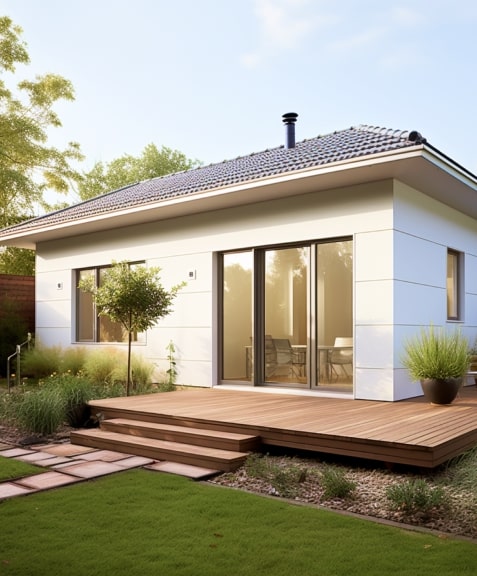
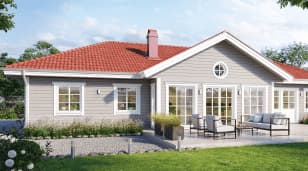
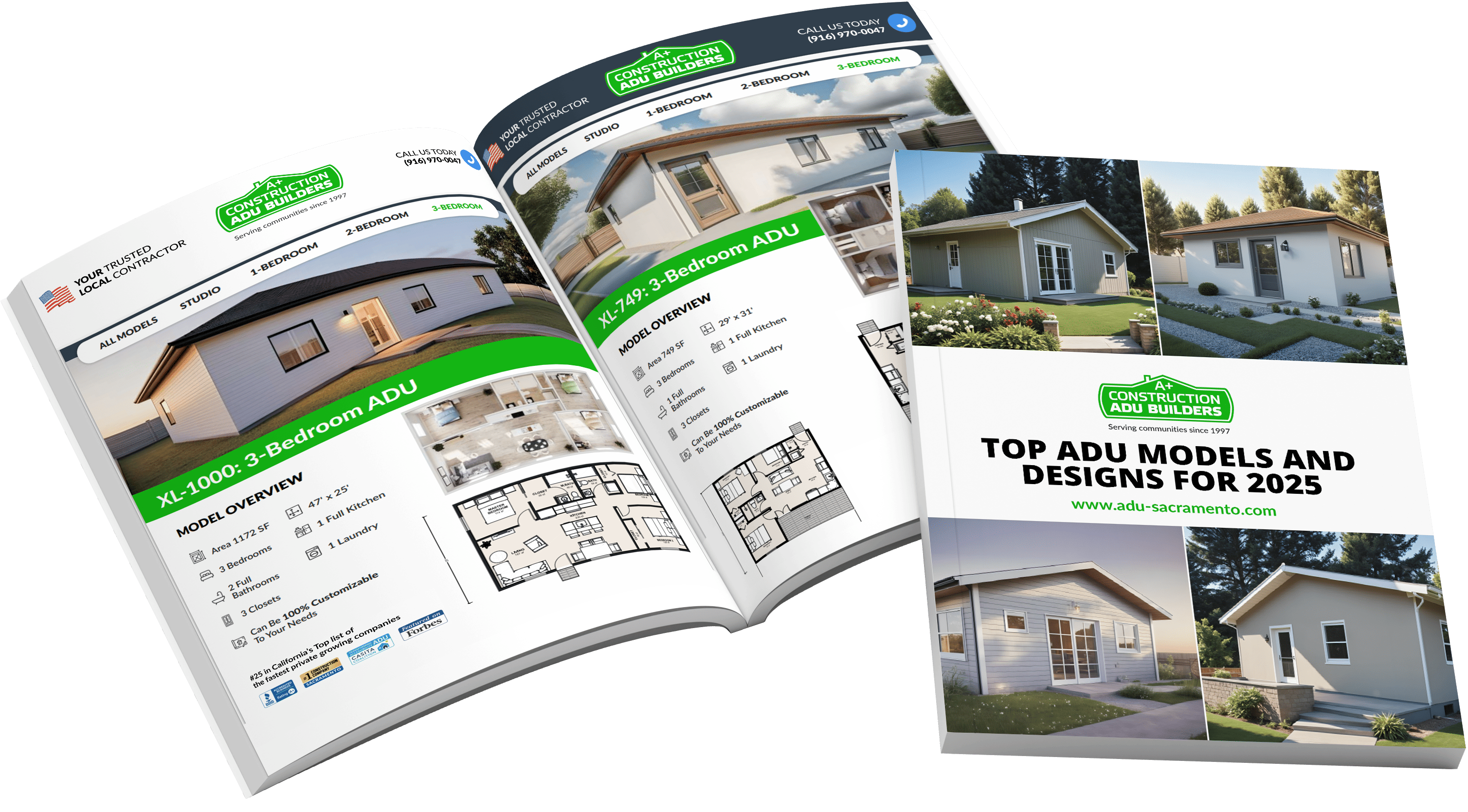


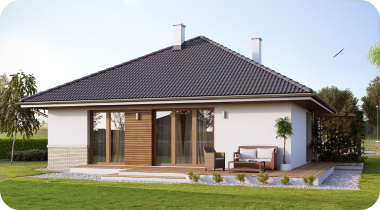
A link to download your FREE brochure will be in your inbox in 3 minutes
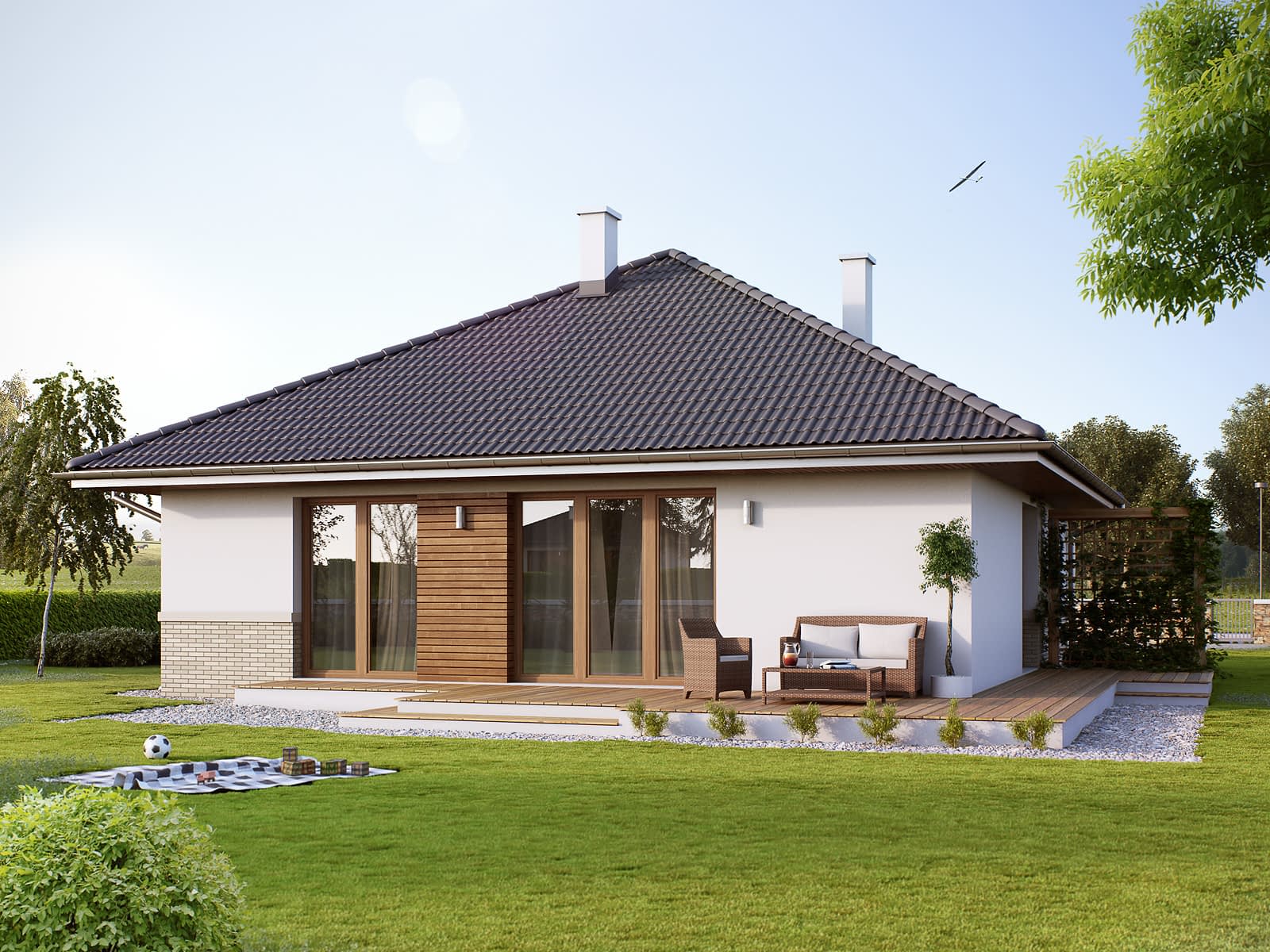






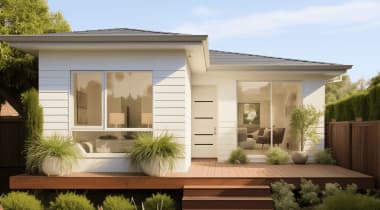











The final price may vary based on project specifics.
To get a free accurate quote tailored to your needs, book a consultation with us today!

The price per square foot provided is an average and may vary depending on project-specific details such as materials, location, complexity, and other factors. Actual costs may differ from the average provided.
It is recommended to obtain a detailed quote based on the specific requirements of your project.

Please note that the monthly payment displayed on this page is an estimate and is subject to variation based on the selected loan product, applicants credit score, loan amount, and other financial details. Actual monthly payment may differ from the estimate provided.
It is recommended to seek advice from a financial advisor or loan officer to obtain precise payment information tailored to individual circumstances.
 Your Trusted
Local Contractor
Your Trusted
Local Contractor
Yes, we offer several financing options. We work with great lenders that can work with you, if you choose to finance. Please call us at (916) 970-0047 to go over the financing options we offer.
We offer a 1-year limited workmanship warranty. Materials are covered by the manufacturer warranty.
Yes, A+ Construction & Remodeling is fully insured on all of our services, giving you one less thing to worry about.
Our company guarantees satisfaction and our skilled team of workers lives up to that satisfaction through its workmanship. We work with you every step of the way, from design to appliances. We have only the best people working on our team and they dedicate their time and expertise to you.
There are numerous testimonials on our site from many of our happy customers, feel free to read them before getting a quote. We’re also highly rated on Yelp, Google, Facebook, and Buildzoom, so you can see additional reviews on any of these sites.
Most of our employees have been with us many years, and ALL are certified, licensed and trained to be the very best. We absolutely guarantee that our estimators and installers will treat you and your home with the utmost respect. In fact, we have hundreds of comments from our customers stating that they couldn’t have imagined a better kitchen-remodeling experience. We assure all of our customers that we will not leave their homes in any state of disarray and we live up to that promise on every job.
Absolutely! Just visit the Recent Projects page on our website, or navigate to the Kitchen Remodeling page to see examples of our stellar work. There, you will see how we’ve taken old kitchens and completely transformed the aesthetic to make them more modern and stylish.
We are based in Sacramento and have become well-known as one of the most recommended contractors in the Northern California area. If you’re not sure whether or not your home is within our service area, just call our office at (916)970-0047 and our team will be able to tell you if we service your area or not.
We’ve been servicing communities since 1997 and have undergone over 500 finished kitchen remodels and have installed thousands of kitchen cabinets with positive feedback from our satisfied customers.
Usually, the entire process of designing, permitting, and building a custom ADU will take 4-6 months of preparation and 6-9 months for construction. Some counties have pre-approved ADU standard plans (PRADU), so with pre-approved plans the permitting time is cut down to just 2 months.
We create an individual payment schedule for each client. You can pay by cash, credit card, bank transfer, or check. You have the option to pay online, by mail or in-person. We can also work with any financing institution of your choice, if you’re financing your project.
Depending on the county you live in but anywhere from 800SF to 1200 of livable space. Other spaces such as a garage or sunroom can be added in addition to those square footages.
The cost depends on many factors such as your house/site conditions, type, style and size of the addition, which finishing materials you decide to use, etc. Our main goal is not only to deliver the best construction product but to keep the entire process clear and understandable for you from start to finish. After the initial meeting, we will provide you with a preliminary estimate and will work with you to connect it to your budget. As a design-build company, we will take care of all the steps — from design and blueprints to construction, inspections, and everything in between. A dedicated project manager will be with you during the entire project to help you and answer all your questions!
That would depend on the condition or the existing structure we are adding on to. Sometimes there are things that need to be addressed with your existing structure in order to be able to add on to it, in which case building a detached structure would be less in cost.
An ADU is a secondary living space on your property. It has its own entrance, kitchen, bathroom, and living area, and can be used for rental income, housing family members, or as a guest house.
There are three main types of ADUs: detached (a separate building), attached (connected to your main house), and conversion (a converted space within your house, like a basement, attic, or garage).
A detached ADU is a standalone building on your property, providing more privacy. An attached ADU is connected to your main house but has its own entrance and living facilities, offering convenience while being close to the main residence.
A JADU is a smaller type of ADU, usually under 500 square feet, that must be part of the main house. It often uses existing space and doesn’t need a separate bathroom if one is accessible in the main house.
Yes, ADUs are legal in Sacramento. Recent regulations have made it easier to build them, helping to provide more affordable housing options.
ADUs can increase property value, generate rental income, and provide flexible living arrangements for family members or guests. They are also a solution to housing shortages and can make homeownership more affordable.
An ADU adds additional living space to your property, making it more attractive to potential buyers and increasing its overall market value. It also offers potential rental income, which can be a significant selling point.
Yes, ADUs can be rented out to generate extra income. They are popular for short-term rentals or as long-term housing for tenants.
ADUs are often used as rental units, guest houses, home offices, or living spaces for elderly family members. They provide versatile housing options that can adapt to your changing needs.
The size of an ADU can range from 150 to 1,200 square feet, depending on local regulations. It’s essential to check the specific size limits in your area.
Height restrictions vary but typically range from 16 to 25 feet. Check your local zoning laws for specific height requirements in your area.
Setback requirements usually include a minimum distance from property lines, often between 4 to 10 feet. These requirements ensure proper spacing from neighboring properties and streets.
Yes, ADUs must comply with local zoning regulations, which can vary significantly. It’s important to understand your area’s specific requirements before starting your ADU project.
Building an ADU typically requires permits for building, electrical, plumbing, and sometimes special ADU permits. The permitting process ensures that the construction meets all safety and building code standards.
The construction timeline for an ADU can range from 6 to 12 months, depending on the complexity of the project and the permitting process. Factors such as design, size, and local regulations can impact the timeline.
Building an ADU can cost anywhere from $100,000 to $350,000 or more, depending on factors like size, design, and location. Costs include permits, materials, labor, and any necessary upgrades to utilities.
Yes, several financing options are available, including home equity loans, refinancing, and specialized ADU loans. These options can help cover the costs of construction and make the project more affordable.
Yes, converting a garage into an ADU is a popular option. This can be a cost-effective way to create additional living space without the need for new construction.
An ADU is a separate living unit with its own entrance, kitchen, and bathroom, while a home addition expands the existing living space of the main house. ADUs provide more independence and flexibility compared to traditional home additions.
To start planning an ADU project, you should first check local zoning regulations and permit requirements. Next, decide on the type of ADU that suits your property and needs, and consult with a designer or architect to create plans. Finally, obtain the necessary permits and hire a contractor like A+ Construction ADU Builders to begin construction.
Converting a garage into an ADU is cost-effective since it utilizes existing structures. This type of ADU can quickly provide additional living space and generate rental income without needing extensive new construction.
While separate utility meters are not always required, having them can simplify billing and management, especially if the ADU is rented out. In Sacramento, ADUs can share utilities with the main house, but it is crucial to ensure that the existing systems can handle the additional load.
Yes, ADUs can be built in historic districts in Sacramento, but they must comply with specific design guidelines to maintain the area’s historical character. Approval from local historic preservation boards may also be necessary.
Parking requirements for ADUs generally include one off-street parking space per unit. However, there are exceptions if the ADU is near public transit or in certain zoning areas where parking requirements may be waived.
Yes, Sacramento has design restrictions to ensure ADUs blend well with existing neighborhoods. These include guidelines on size, height, and setbacks, as well as aesthetic considerations to maintain neighborhood character.
An ADU requires regular maintenance similar to any home, including plumbing, electrical systems, heating and cooling, and general upkeep. Proper maintenance ensures the longevity and safety of the unit.
While not very common, an ADU can include a basement if it complies with local building codes and zoning regulations. Basements can provide additional living or storage space and improve the functionality of the ADU.
When selecting a contractor, consider their experience with ADU projects, knowledge of local regulations, past project portfolio, and client reviews. It’s important to choose a contractor who is licensed and has a proven track record in ADU construction.
ADUs promote sustainable living by increasing housing density and utilizing existing infrastructure. They can be designed with energy-efficient features, reducing the environmental footprint and contributing to more sustainable urban development.
Yes, ADUs can be used for short-term rentals in Sacramento, but regulations vary. Homeowners must comply with local ordinances, which may include obtaining a short-term rental permit and adhering to specific rental guidelines.
California offers various incentives, including grants, fee waivers, and low-interest loans to encourage ADU construction. These incentives aim to increase affordable housing availability and reduce financial burdens on homeowners.
Absolutely, ADUs can be designed and used as home offices, art studios, or other workspaces. This flexibility makes ADUs a versatile option for homeowners needing additional space for various purposes.
Homeowners should ensure their insurance policy covers the ADU for property damage, liability, and rental coverage if applicable. Consulting with an insurance provider can help determine the best coverage options for your ADU.
Yes, as long as the property complies with local zoning regulations and there is enough space to meet setback and other requirements, you can build an ADU even if there is an existing home addition.
To make an ADU accessible, include features like no-step entrances, wider doorways, accessible bathroom fixtures, and open floor plans. Following ADA guidelines can help ensure the ADU is comfortable for people with disabilities. At A+ Construction ADU Builders, we have built ADA-accessible ADUs and can provide expert advice on making your ADU accessible.
The approval process involves submitting design plans, applying for necessary permits, and undergoing inspections to ensure compliance with local building codes. Sacramento has a detailed approval process that ensures all ADUs meet safety and building standards. At A+ Construction ADU Builders, we handle all these steps for you, so you don’t have to worry about navigating the bureaucracy.
Not all residential zones allow ADUs. It’s important to check with the Sacramento zoning department to see if your property is in a zone that permits ADU construction. Schedule a free property assessment with our ADU consultants, and they will determine if your property qualifies and guide you through the next steps.
Common challenges include navigating local regulations, managing construction costs, ensuring adequate utility connections, and designing a unit that complements the existing property and neighborhood aesthetics. At A+ Construction ADU Builders, we take out the headache and cover all the challenges with our extensive experience.
To ensure your ADU is energy-efficient, use high-quality insulation, energy-efficient windows and doors, and ENERGY STAR-rated appliances. Additionally, consider incorporating renewable energy sources like solar panels to further reduce energy consumption. At A+ Construction ADU Builders, we specialize in energy-efficient ADUs and know how to design them to lower your energy bills.
Noise insulation is important for maintaining privacy and comfort in ADUs. Requirements typically include proper insulation in walls, ceilings, and floors, as well as the use of double-glazed windows and soundproofing materials. These measures help reduce noise transmission between the ADU and the main house, as well as from external sources. At A+ Construction ADU Builders, we ensure your ADU is built with high-quality noise insulation to provide a peaceful living environment.
Yes, we offer financing options to help make your ADU project more affordable. We collaborate with an experienced partner who provides the best financing solutions tailored to your needs. For more information, please visit our financing page at https://aplusconstructionremodeling.com/financing/
You can connect an ADU to the existing septic system if the system has adequate capacity to handle the additional load. However, in most cases, an ADU requires its own septic system because the capacity of the existing septic system typically wasn’t designed to accommodate the additional usage from an ADU.
No, you can choose the level of your kitchen remodel depending on your desires. Some people want to completely remodel theirs and make it look entirely different, while others choose to remodel certain aspects of their existing kitchen.
It depends on what you want accomplished in your kitchen. Some basic remodeling jobs have taken us a matter of days, while the more complex ones can span over the course of a few weeks. Before we undertake any job, we aim to give an estimate of how long it will take, so you’re given a timeframe.
The benefits vary depending on what you do in your remodel. At the very least, you’ll benefit from having a nicer looking kitchen that improves the way your home looks. But, you could also see a more functional kitchen that provides you with additional space and makes life a lot easier. Not to mention the fact that you extend the life of your kitchen, and can actually add value to your property as well.
Our quotes are completely free of charge. All you need to do to schedule a free quote is call (916) 970-0047.
No, you don’t have to go through with the kitchen remodel after receiving your quote for the service. It’s a no-obligation quote, but we’ll be more than happy to offer suggestions on how you can lower the price to make it more affordable.
Kitchen remodeling doesn’t have one set price. It all depends on how much work you need done and the materials you choose. We would work with your budget to give you the kitchen of your dreams. The cost of your remodel will be estimated beforehand, and you’ll be given a quote.
Our remodeling process begins with you, and it’s as simple as listening to your requests and turning them into reality. Our construction team works quickly and efficiently to remove any old parts of your kitchen and replace them with new and improved versions. Essentially, we take everything you don’t like about your kitchen and make it better – both practically and aesthetically.
We recommend you choose all the appliances as early as possible. Preferably, you’ll have your choices laid out during the design stage so we can purchase and install them as the project progresses.
Yes, you don’t just choose how your kitchen looks, you also get to choose the appliances in it. There is a broad range of options to choose from and we can help along the way.
We handle all the design work to ensure your dreams become a reality. You tell us what you want your new kitchen to look like, and our qualified design team does the rest.
Yes, you get to choose everything to do with the way your kitchen looks. This includes choosing the cabinet design, flooring type, and everything in between. Our design team will work with you every step of the way.
Of course, we’re always available to give you updates on how the remodel is going along. This lets you know if we’re on course to finish within the predicted time stated before the work began. We’ll constantly provide updates, but you’re more than welcome to request them at will.
Permits requirements are discussed on case-by-case situations. Not every project requires a permit, for example doing cosmetic changes such as changing out your countertop would not require a permit. Our remodeling specialist can tell you if your project would require a permit.
You might, but only if certain jobs need to be completed such as installing new appliances or fitting new features. Some of these tasks need us to temporarily switch off your power/utilities, but only until we are finished.
If you’re only getting a kitchen remodel, then there’s no need for your family to move out during the work. When possible, we handle the toughest tasks first, such as installing new cookers or fridges, etc. This means you won’t have to try and survive without a functioning kitchen. We will let you know of the project plan beforehand so that, if needed, you can make arrangements.
Part of our service means we might have to fit new sinks or other kitchen features that require plumbing or electrical work. In instances like this, we will handle all the plumbing and electrical work to ensure everything fits perfectly and your new features work efficiently.
It’s fairly impossible to remodel a kitchen without creating a bit of mess. This is simply the nature of the tasks of a remodeling project. Having said that, we will clear up all our mess at the end so you won’t have to deal with it after we leave.
Kitchen remodeling is simply the process of taking a kitchen and improving the way it looks and functions. A lot of kitchens become outdated, meaning they need to be remodeled into more modern spaces to improve the look and function of the kitchen.
Some projects are more disruptive than others but your project manager will be able to tell you how disruptive the remodel will be so that, if needed, you can make arrangements. No matter what type of remodel you are considering, seeing the finished project far outweighs the temporary inconveniences and once you settle into your new space those disruptions are quickly forgotten.
An ADU is a secondary living space on your property. It has its own entrance, kitchen, bathroom, and living area, and can be used for rental income, housing family members, or as a guest house.
There are three main types of ADUs: detached (a separate building), attached (connected to your main house), and conversion (a converted space within your house, like a basement, attic, or garage).
A detached ADU is a standalone building on your property, providing more privacy. An attached ADU is connected to your main house but has its own entrance and living facilities, offering convenience while being close to the main residence.
A JADU is a smaller type of ADU, usually under 500 square feet, that must be part of the main house. It often uses existing space and doesn’t need a separate bathroom if one is accessible in the main house.
An ADU is a separate living unit with its own entrance, kitchen, and bathroom, while a home addition expands the existing living space of the main house. ADUs provide more independence and flexibility compared to traditional home additions.
ADUs can increase property value, generate rental income, and provide flexible living arrangements for family members or guests. They are also a solution to housing shortages and can make homeownership more affordable.
An ADU adds additional living space to your property, making it more attractive to potential buyers and increasing its overall market value. It also offers potential rental income, which can be a significant selling point.
Yes, ADUs can be rented out to generate extra income. They are popular for short-term rentals or as long-term housing for tenants.
ADUs are often used as rental units, guest houses, home offices, or living spaces for elderly family members. They provide versatile housing options that can adapt to your changing needs.
Converting a garage into an ADU is cost-effective since it utilizes existing structures. This type of ADU can quickly provide additional living space and generate rental income without needing extensive new construction.
Yes, ADUs can be used for short-term rentals in Sacramento, but regulations vary. Homeowners must comply with local ordinances, which may include obtaining a short-term rental permit and adhering to specific rental guidelines.
Absolutely, ADUs can be designed and used as home offices, art studios, or other workspaces. This flexibility makes ADUs a versatile option for homeowners needing additional space for various purposes.
ADUs promote sustainable living by increasing housing density and utilizing existing infrastructure. They can be designed with energy-efficient features, reducing the environmental footprint and contributing to more sustainable urban development.
The size of an ADU can range from 150 to 1,200 square feet, depending on local regulations. It’s essential to check the specific size limits in your area.
Height restrictions vary but typically range from 16 to 25 feet. Check your local zoning laws for specific height requirements in your area.
Setback requirements usually include a minimum distance from property lines, often between 4 to 10 feet. These requirements ensure proper spacing from neighboring properties and streets.
Yes, converting a garage into an ADU is a popular option. This can be a cost-effective way to create additional living space without the need for new construction.
Parking requirements for ADUs generally include one off-street parking space per unit. However, there are exceptions if the ADU is near public transit or in certain zoning areas where parking requirements may be waived.
Yes, Sacramento has design restrictions to ensure ADUs blend well with existing neighborhoods. These include guidelines on size, height, and setbacks, as well as aesthetic considerations to maintain neighborhood character.
While not very common, an ADU can include a basement if it complies with local building codes and zoning regulations. Basements can provide additional living or storage space and improve the functionality of the ADU.
Yes, as long as the property complies with local zoning regulations and there is enough space to meet setback and other requirements, you can build an ADU even if there is an existing home addition.
Noise insulation is important for maintaining privacy and comfort in ADUs. Requirements typically include proper insulation in walls, ceilings, and floors, as well as the use of double-glazed windows and soundproofing materials. These measures help reduce noise transmission between the ADU and the main house, as well as from external sources. At A+ Construction ADU Builders, we ensure your ADU is built with high-quality noise insulation to provide a peaceful living environment.
Yes, ADUs are legal in Sacramento. Recent regulations have made it easier to build them, helping to provide more affordable housing options.
Yes, ADUs must comply with local zoning regulations, which can vary significantly. It’s important to understand your area’s specific requirements before starting your ADU project.
Yes, ADUs can be built in historic districts in Sacramento, but they must comply with specific design guidelines to maintain the area’s historical character. Approval from local historic preservation boards may also be necessary.
Not all residential zones allow ADUs. It’s important to check with the Sacramento zoning department to see if your property is in a zone that permits ADU construction. Schedule a free property assessment with our ADU consultants, and they will determine if your property qualifies and guide you through the next steps.
Building an ADU typically requires permits for building, electrical, plumbing, and sometimes special ADU permits. The permitting process ensures that the construction meets all safety and building code standards.
To start planning an ADU project, you should first check local zoning regulations and permit requirements. Next, decide on the type of ADU that suits your property and needs, and consult with a designer or architect to create plans. Finally, obtain the necessary permits and hire a contractor like A+ Construction ADU Builders to begin construction.
While separate utility meters are not always required, having them can simplify billing and management, especially if the ADU is rented out. In Sacramento, ADUs can share utilities with the main house, but it is crucial to ensure that the existing systems can handle the additional load.
The approval process involves submitting design plans, applying for necessary permits, and undergoing inspections to ensure compliance with local building codes. Sacramento has a detailed approval process that ensures all ADUs meet safety and building standards. At A+ Construction ADU Builders, we handle all these steps for you, so you don’t have to worry about navigating the bureaucracy.
The construction timeline for an ADU can range from 6 to 12 months, depending on the complexity of the project and the permitting process. Factors such as design, size, and local regulations can impact the timeline.
Building an ADU can cost anywhere from $100,000 to $350,000 or more, depending on factors like size, design, and location. Costs include permits, materials, labor, and any necessary upgrades to utilities.
Yes, several financing options are available, including home equity loans, refinancing, and specialized ADU loans. These options can help cover the costs of construction and make the project more affordable.
California offers various incentives, including grants, fee waivers, and low-interest loans to encourage ADU construction. These incentives aim to increase affordable housing availability and reduce financial burdens on homeowners.
– Yes, we offer financing options to help make your ADU project more affordable. We collaborate with an experienced partner who provides the best financing solutions tailored to your needs. For more information, please visit our financing page at https://aplusconstructionremodeling.com/financing/
An ADU requires regular maintenance similar to any home, including plumbing, electrical systems, heating and cooling, and general upkeep. Proper maintenance ensures the longevity and safety of the unit.
When selecting a contractor, consider their experience with ADU projects, knowledge of local regulations, past project portfolio, and client reviews. It’s important to choose a contractor who is licensed and has a proven track record in ADU construction.
Homeowners should ensure their insurance policy covers the ADU for property damage, liability, and rental coverage if applicable. Consulting with an insurance provider can help determine the best coverage options for your ADU.
To make an ADU accessible, include features like no-step entrances, wider doorways, accessible bathroom fixtures, and open floor plans. Following ADA guidelines can help ensure the ADU is comfortable for people with disabilities. At A+ Construction ADU Builders, we have built ADA-accessible ADUs and can provide expert advice on making your ADU accessible.
Common challenges include navigating local regulations, managing construction costs, ensuring adequate utility connections, and designing a unit that complements the existing property and neighborhood aesthetics. At A+ Construction ADU Builders, we take out the headache and cover all the challenges with our extensive experience.
To ensure your ADU is energy-efficient, use high-quality insulation, energy-efficient windows and doors, and ENERGY STAR-rated appliances. Additionally, consider incorporating renewable energy sources like solar panels to further reduce energy consumption. At A+ Construction ADU Builders, we specialize in energy-efficient ADUs and know how to design them to lower your energy bills.
You can connect an ADU to the existing septic system if the system has adequate capacity to handle the additional load. However, in most cases, an ADU requires its own septic system because the capacity of the existing septic system typically wasn’t designed to accommodate the additional usage from an ADU.